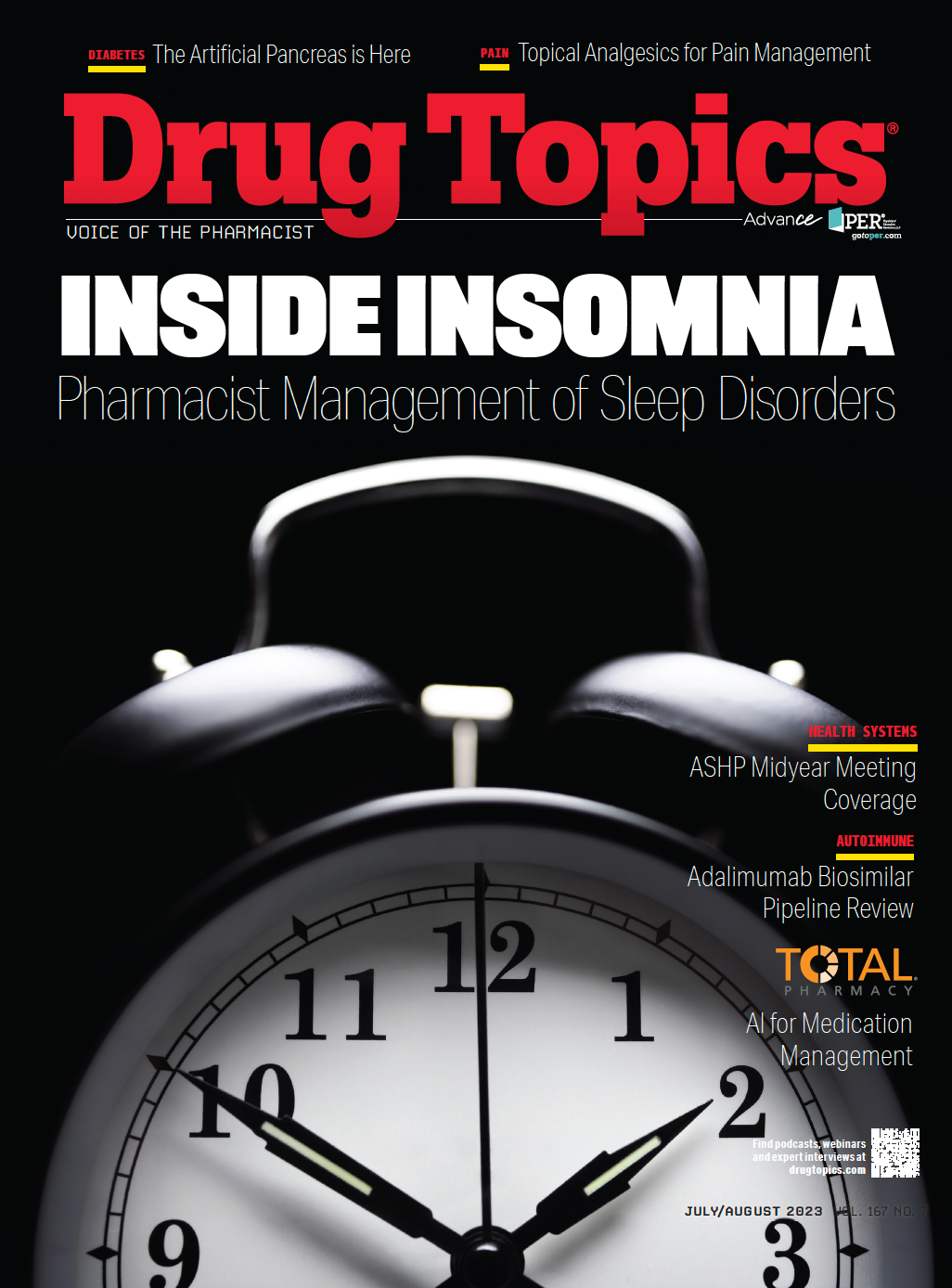New Treatment Approved for Menopausal Hot Flashes
Fezolinetant (Veozah) is approved for the treatment of moderate to severe vasomotor symptoms (ie, hot flashes and night sweats) related to menopause.
On May 12, 2023, the FDA approved fezolinetant (Veozah) for the treatment of moderate to severe vasomotor symptoms (ie, hot flashes and night sweats) related to menopause. Fezolinetant is a neurokinin 3 (NK3) receptor antagonist that blocks the effects of neurokinin B on neurons of the brain to regulate the secretion of gonadotropin-releasing hormone and body temperature. Fezolinetant is the first-in-class NK3 receptor antagonist approved for this indication. It is a nonhormonal treatment option for the management of menopausal vasomotor symptoms.1
Efficacy
The results of two phase 3 clinical trials demonstrated the efficacy of fezolinetant for the management of moderate to severe vasomotor symptoms over 12 weeks. Both trials, Skylight 1 (NCT04003155) and Skylight 2 (NCT04003142) were randomized, double blind, and placebo controlled for the initial 12 weeks, followed by a 40-week active treatment, noncontrolled extended study period to assess safety.
Eligible participants were menopausal women between the ages of 40 and 65 years, with a minimum average of 7 moderate to severe vasomotor symptoms daily. Women taking hormone replacement therapy, hormonal contraceptives, concomitant medications that are moderate to strong CYP1A2 inhibitors, or using other treatments (prescription, herbal, or OTC) to manage vasomotor symptoms were excluded from the trials. Women with uncontrolled hypertension at the time of screening were also excluded, although women with a history of hypertension could be enrolled at investigator discretion if their blood pressure was stabilized with antihypertensive therapy.
A total of 1022 participants received either fezolinetant 30 mg, fezolinetant 45 mg, or placebo daily, then electronically documented their vasomotor symptoms throughout the 12-week study period. In both studies, the primary end points measured were the changes from baseline in frequency and severity of moderate to severe vasomotor symptoms at week 4 and week 12. Results of both clinical trials showed that fezolinetant 45 mg resulted in statistically and clinically significant reductions in the frequency of vasomotor symptoms, or a reduction of 2 or more moderate to severe vasomotor symptoms daily, at 4 and 12 weeks. Participants who received fezolinetant also demonstrated a statistically significant reduction in severity of symptoms compared with placebo at weeks 4 and 12.
Safety
A total of 1100 participants were exposed to fezolinetant in trials lasting 52 weeks. The following adverse reactions occurred in at least 2% of participants exposed to fezolinetant, and with greater frequency than placebo: abdominal pain (4.3% vs 2.1%), diarrhea (3.9% vs 2.6%), insomnia (3.9% vs 1.8%), back pain (3.0% vs 2.1%), hot flush (2.5% vs 1.6%), and elevated hepatic transaminases (2.3% vs 0.8%).
Prescribing information includes a warning about elevations in serum transaminase levels. Baseline bloodwork should be obtained prior to initiating therapy with this medication; therapy should not be initiated if serum transaminase levels are at or above 2 times the upper limit of normal. All patients initiating fezolinetant therapy should obtain repeat testing of transaminase levels at 3, 6, and 9 months, and at any time symptoms indicative of liver injury (eg, nausea, vomiting, jaundice of skin or eyes, or right upper abdominal pain) are experienced.
Fezolinetant is contraindicated in patients with cirrhosis or severe renal impairment (eGFR, < 30 mL/min/1.73 m2). Inhibitors of CYP1A2 significantly increase the maximum concentration of fezolinetant and patient exposure to the drug; fezolinetant should not be taken concomitantly with CYP1A2 inhibitors. Smoking induces CYP1A2, but no clinically significant changes have been noted in reported smokers.
Drug Administration
Fezolinetant is administered as a 45-mg dose once daily. It should be taken at the same time each day; if a dose is missed or taken late, the dose should be taken as soon as possible, unless there are less than 12 hours until the next regularly scheduled dose. If the next dose is within 12 hours, administer the next dose on the usual schedule. The tablet should be swallowed whole, not crushed or cut. Fezolinetant may be taken with or without food.
Reference
1. Veozah. Prescribing information. Astellas Pharma US, Inc; 2023. Accessed June 29, 2023. https://www.accessdata.fda. gov/drugsatfda_docs/label/2023/216578s000lbl.pdf
